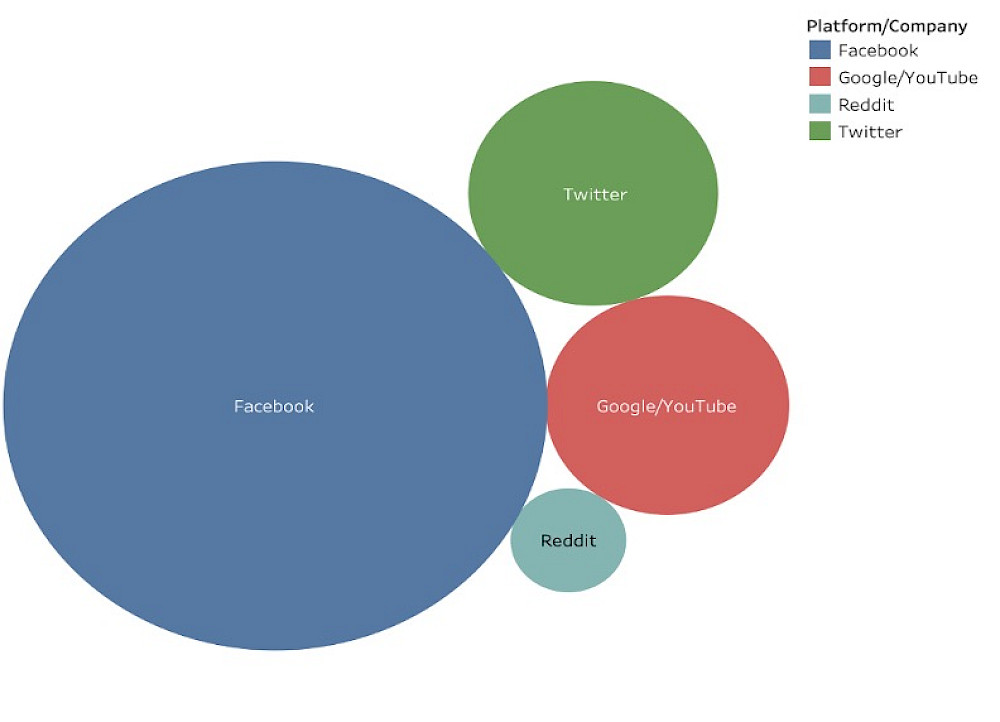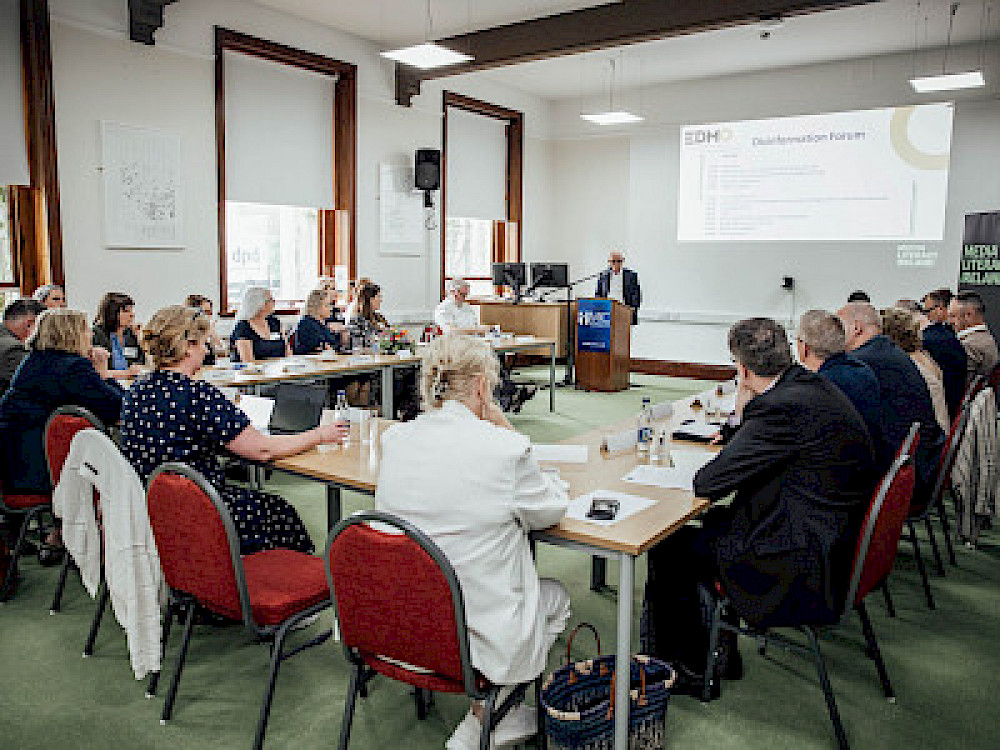Disinformation is defined as the deliberate attempt to mislead. The consequences of it to democracy, humanitarianism and journalism are far-reaching – and nothing new.
Disinformation has existed for centuries, but what makes it so problematic today is the ease with which it can spread via social platforms. It can inflame simmering resentments. It can rupture public trust in government and in the media. The “radical left versus the extreme right” narrative in the United States is a prime example.
Increased efforts by social media platforms to combat sophisticated internet disinformation is a prime focus for investigative journalists, academics and news organisations worldwide.
Disinfodex is a database compiled by researchers at the Berkman Klein Centre in Harvard University. Their researchers compiled a comprehensive inventory of disclosures issued by major social platforms involving disinformation campaigns around the world, as well as reports from opensource investigators including Graphika, the Stanford Internet Observatory and the Atlantic Council’s DFR Lab.
The Global Picture
Disclosures reveal a number of countries implicated in coordinated inauthentic behaviour on Facebook, Twitter, Google/YouTube and Reddit. These platforms began releasing disclosures about disinformation campaigns in an effort to increase transparency following the much scrutinized Russian influence operations that played out in the 2016 US presidential election.
The database shows that Facebook has released the most information about disinformation campaigns, followed by Twitter, Google, and Reddit.
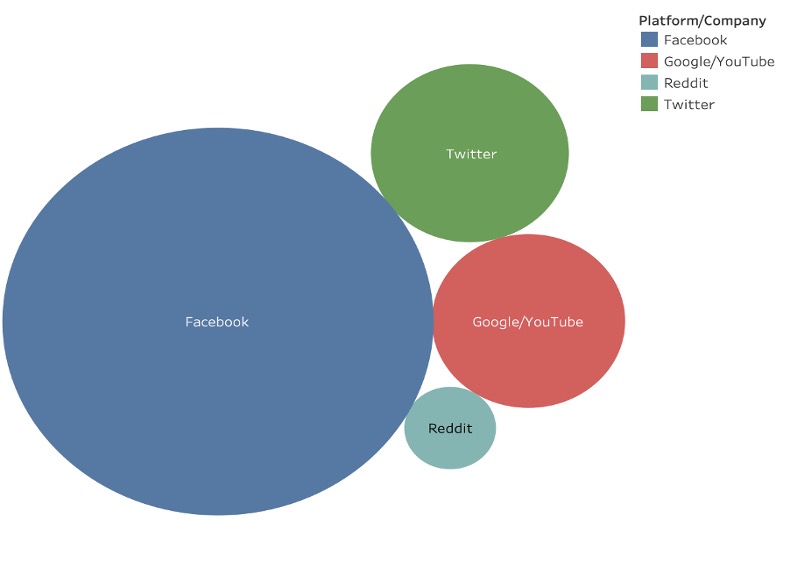
Although the disclosures offer a detailed overview of policy violations by each platform, there is a major gap not in the design of the policies themselves but the lack of enforcement. The database highlights the continuing challenges for social media platforms to combat disinformation, particularly when the speed and magnitude has never been so huge.
According to the database, Russia is the most frequently listed country of origin for disinformation campaigns that violate policies, with Iran and Egypt following in second and third
position.
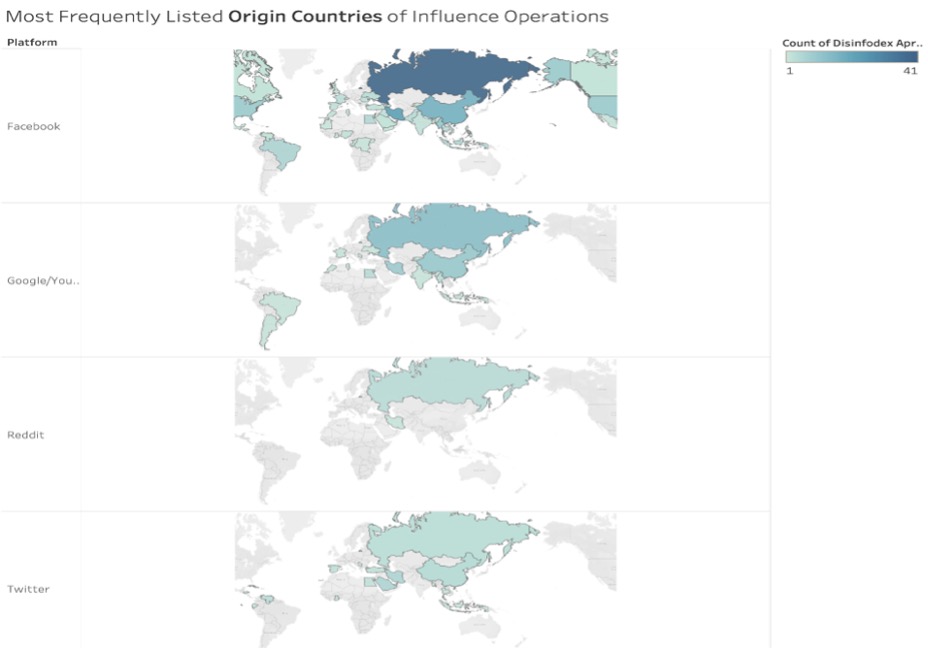
The disclosures show that Russia is conducting large-scale influence operations that go far beyond mainstream social media. A Graphika report featured in the database shows that Russia infiltrates over thirty social media and blogging platforms in nine different languages. They use fake profiles to amplify fake stories and images that create divisive content.
A large number of disclosures show that a focus for Russia is the United States. They are also targeting African countries including Libya, Uganda and Central African Republic (CAR).
The disclosures involving Iran range from platform manipulation regarding Middle Eastern affairs to foreign interference campaigns in the United Kingdom and United States. Their tactical use of spam bots, fake accounts, memes and the hiring of “trolls” to target the UK and the US has been well-documented from as early as 2011. Ten years later, Iran has advanced its cyber intelligence to carry out significant and refined attacks on the West.
Within the United States, there is a mix of domestic and foreign disinformation campaigns operating with loose ties to foreign governments. A vast amount of American dollars was spent on Facebook advertising targeting Myanmar, according to a report issued by DFR Lab.
The Myanmar government and military have a firm grip on their country’s social media and take advantage of the fact that over 80% of the population use Facebook as their main social media platform. During previous investigations in 2018, evidence emerged that the military were trained by Russian intelligence operatives on how to use social media to their advantage, including leading audiences onto pro-military websites.
Based on the disclosures offered on Disinfodex, both China and Saudi Arabia are not frequently cited for producing disinformation despite being two powerful forces in global disinformation.
Twitter, for example, disclosed information about removing almost 200,000 amplifier accounts that originated in China. These accounts were designed to boost false content and were strategically designed to inflate impression metrics. Twitter also disclosed information that revealed thousands of accounts that amplified favourable messages about Saudi authorities were removed. Such accounts were traced to a social media marketing company based in Egypt.
Media marketing companies bring a new type of commercialization to the activity of disinformation worldwide. Governments have used these to shape public opinion. It is clear that these tactics are no longer limited to larger countries, with smaller nations like Ecuador and the Honduras being both prime origin and target countries.
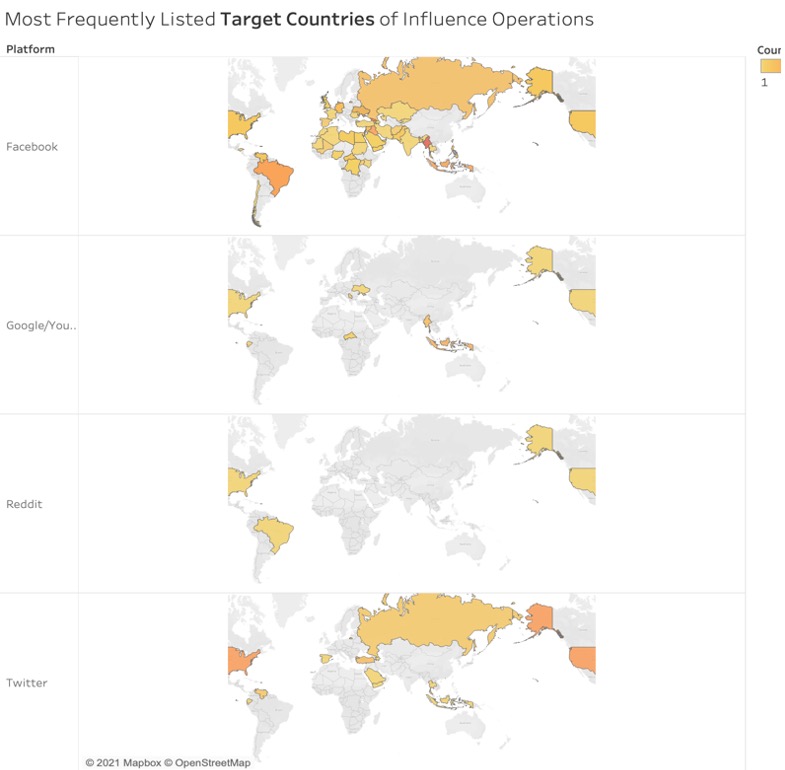
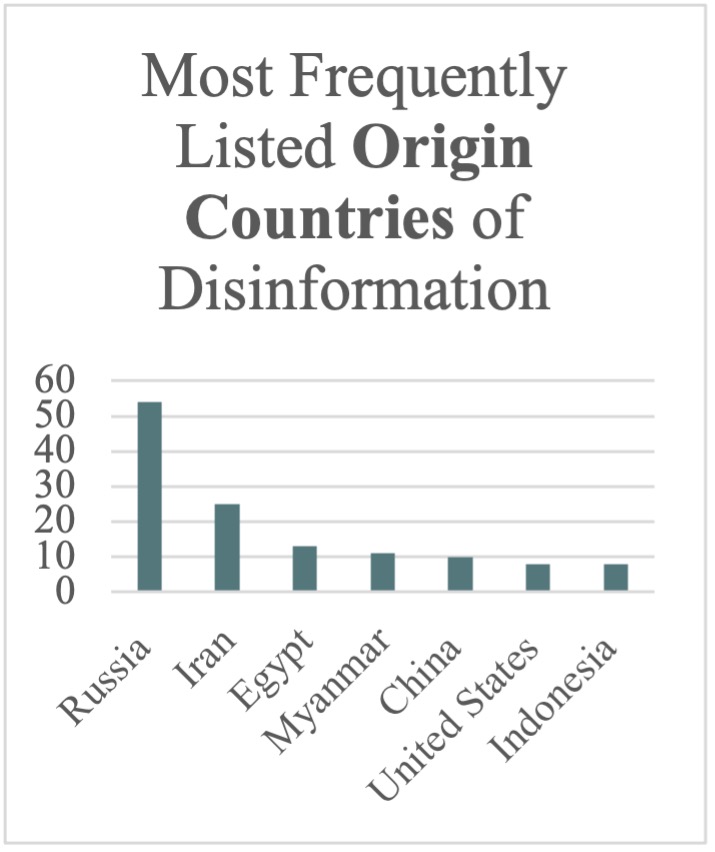
The United States is the most frequently listed target country for disinformation. It is a country that has influenced leadership outcomes in foreign countries for decades and disinformation campaigns have been used against them by governments throughout history.
Addressing the Problem
It is important to note that all of these disclosures on the Disinfodex database were issued by US-based platforms and represent only a fraction of disinformation on these platforms. The database is updated on a near-weekly basis, with more countries being implicated in coordinated inauthentic behaviour regularly.
The data only reveals what kind of operations the origin countries are putting their resources towards on these platforms.
Researchers agree there is no silver bullet to solve the problem of covert influence operations on social media platforms. It requires the enforcement of effective policies from the platforms, effective laws to govern the space, education of the general public, and access to data so researchers can fully understand the problem. This data gives some insight into what social media platforms are focused on, but it is not the full picture.
The solution seems simple: social media platforms need to implement robust policies and regulate themselves like any publisher. But the problem is much more complex, as Carnegie's PCIO has outlines.
Social media and messaging platforms are de facto regulators of online speech and therefore key decisionmakers in combating online influence operations. Do we want a few companies in Silicon Valley dictating what should remain online? Researchers generally agree it requires a whole-of-society approach.
People are being misled by fake news on a grand scale via social media; a new strategy in a very old game to divide and conquer. Before social media, it was television and before television, it was newspapers. The general public must understand that it doesn’t have to be the truth, it just has to sound like it in order to gain traction.
In many ways it is a war on truth, led largely by governments and mega-companies. It is a global issue that seriously undermines credible research. Databases such as Disinfodex are valuable for journalists and news organisations as well as the general public who want to improve their digital literacy.
The social media environment has propelled disinformation around the world and it is an important area of research for journalism today.
Nollaig O’Connor is a MAJ student in DCU School of Communications. She’s currently writing a dissertation that examines the best practices for journalists around disinformation verification on social media.
